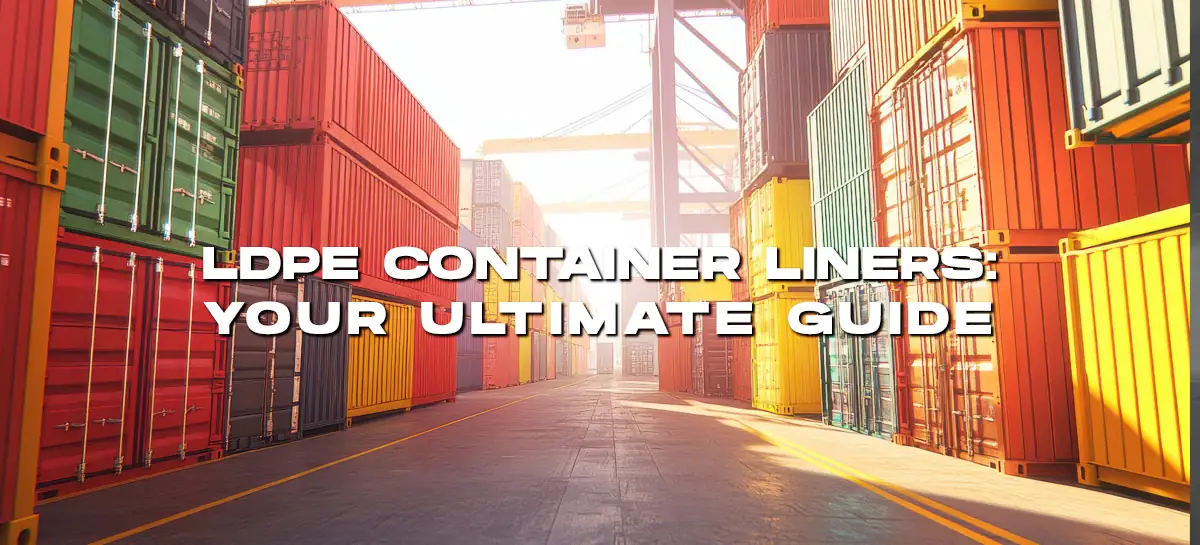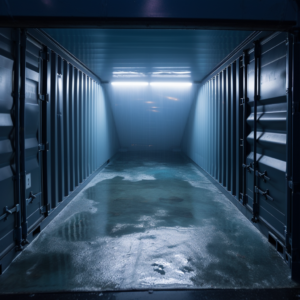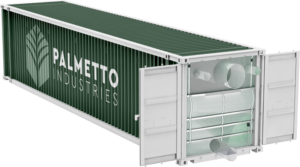LDPE Container Liners: Your Ultimate Guide
Bulk transportation poses a significant challenge for businesses, with the risk of product contamination, waste, and inefficient handling during transit.
Imagine meticulously prepared goods arriving damaged and compromised, leading to financial losses and tarnished reputations.
Enter LDPE container liners—a transformative solution that eliminates these risks.
Versatile, cost-effective, and providing superior protection, they’re revolutionizing the way we transport and safeguard goods.
Join us on this journey to unlock their full potential—a game-changer for businesses worldwide.
Firstly, What Are LDPE Container Liners?
LDPE container liners are made from low density polyethylene, a type of thermoplastic material. They’re specifically designed to be placed inside containers to provide a protective barrier between the goods and the container itself.
How Are LDPE Container Liners Made?
LDPE container liners are made by extruding low density polyethylene resin into a thin film. The film is then cut, folded, and sealed to create a bag-like structure that fits inside.
The thickness of the film can vary depending on the specific requirements of the product being packaged. Thicker films are used for heavy-duty applications or goods that require extra protection, while thinner films are suitable for lighter goods.
Note that LDPE resin is a flexible and durable material that provides a high level of resistance to punctures, tears, and chemical substances. This makes them suitable for packaging a wide range of goods, including powders, granules, liquids, and bulk goods.
After the film is created, the edges are then sealed either through heat sealing or using adhesive tapes, ensuring that the final product remains securely in place during transportation and storage.
Before we get into why low density polyethylene is a popular option, if you need any assistance with sourcing shipping container liners, don’t hesitate to get in touch with the team here at Palmetto Industries.
Ideal For Packaging, Storage & Transportation
LDPE container liners offer rather a long list of benefits, namely:
- Moisture protection
- Contamination-free
- Resistant to punctures and tears
- Versatility
- Cost-effective
- Loading/unloading efficiency
- Minimal product loss
- Environmental considerations
- Customization
Any of the above pique your interest? Let’s take a look at them in more detail…
Protection Against Moisture
This moisture-free bulk packaging solution ensures that the product remains in optimal condition during transportation, especially for goods that are sensitive to moisture. As such, this greatly aids in the prevention of mold in shipping containers.
This is due to them fitting snugly inside, creating a protective barrier between the goods and the container walls.
In addition, they effectively control the humidity levels, keeping the moisture away from the goods. This ensures that the products remain in optimal condition throughout the entire transportation process, even in humid or damp environments.
Free From Contamination
Acting as a barrier between the product and the container prevents any contact between the two. This helps in maintaining product hygiene and quality, particularly in industries such as food and pharmaceuticals.
In addition, they can prevent the transfer of odors and flavors between different goods in the food industry, making them ideal for packaging various food items.
Similarly, in the pharmaceutical industry, liners play a crucial role in ensuring the integrity and effectiveness of medications. They create a sterile environment and protect drugs from moisture, air, and other environmental factors that could impact their stability and potency.
Finally, they can help in preventing the migration of chemicals or substances from the container into the product, which could alter its composition or result in cross-contamination.
Resistance To Punctures And Tears
The high-density polyethylene offers excellent strength and durability, ensuring that the product inside remains protected, even in challenging transportation conditions.
More specifically, its resistance to impact, punctures, and tears makes it ideal for withstanding rough transportation conditions. Whether the product is being shipped or transported over long distances, the liner provides a protective barrier, preventing any damage or spoilage.
Versatility
Low density polyethylene container liners are compatible with various container types, including standard ISO, bulk, and even open-top containers.
This adaptability makes them suitable for a wide range of industries, from food and beverages to chemicals, agriculture, mining, and beyond.
Cost-Effective Solution
Compared to alternative protective measures, such as pallet covers or stretch wraps, this LDPE solution offers long-term cost savings by eliminating the need for additional packaging materials, reducing expenses and streamlining the packaging and transportation process.
When using pallet covers or stretch wraps, businesses need to purchase these materials separately and use them alongside their existing packaging. This can result in increased costs as well as additional labor and time required for packaging.
In contrast, low density polyethylene versions integrate into the container itself, eliminating the need for separate packaging materials.
Efficient Loading And Unloading
With proper installation, they create a smooth surface inside the container, preventing goods from getting stuck or damaged during handling.
This smooth surface provides a safe and efficient environment for the movement of goods, reducing the risk of any disruptions in the supply chain. Additionally, it enhances the overall durability and structural integrity of the container, ensuring the safe delivery of goods to their destination.
Minimized Product Loss
By mitigating the risk of physical damage, contamination, and spoilage, this LDPE product helps businesses minimize product loss and reduce financial setbacks.
This further leads to increased customer satisfaction and improved brand reputation. Customers appreciate receiving goods that are in perfect condition, and this can lead to increased loyalty, repeat purchases, and positive word-of-mouth.
Consistently delivering goods in excellent condition demonstrates professionalism, reliability, and a commitment to quality, which can enhance the overall perception of a brand.
Environmental Considerations
LDPE container liners can be recycled, contributing to sustainability efforts. Recycling low density polyethylene materials helps conserve resources by reducing the need for new plastic production, which requires energy and raw materials.
Additionally, recycling them diverts these materials from landfill disposal, where they would take hundreds of years to decompose. By recycling them instead, the liners can be transformed into new goods, extending their lifespan and reducing the demand for virgin plastics.
Moreover, they can also benefit sustainability efforts by reducing the need for other packaging materials. For example, using a liner to hold a product within a larger container can eliminate the need for additional packaging materials, such as plastic bags or wrap.
Customization Options
You can choose from various sizes, thicknesses, and features, ensuring a precise fit for your cargo and enhancing the overall protective capabilities.
By partnering with reputable providers like Palmetto Industries, your business can access high-quality liners and expert guidance to optimize their logistics operations and unlock the full potential of this game-changing solution.
Get in touch with us today so we can discuss your needs!
Any Downsides To Using LDPE In Container Liners?
While low density polyethylene is commonly used due to its flexible and lightweight nature, there are several factors to be aware of:
- Low melting point: LDPE has a relatively low melting point, making it susceptible to melting or warping under high temperatures. This can be particularly problematic during transportation or storage of goods in hot climates.
- Low stiffness and tensile strength: Compared to other materials, this may make it less effective in providing the necessary support and protection to the goods inside.
- Not suitable for ALL chemicals: Low density polyethylene isn’t resistant to many chemicals and solvents, which limits its usage in certain industries that require the transportation of hazardous or corrosive substances.
- Not biodegradable: Although recyclable, LDPE isn’t biodegradable and can contribute to plastic waste and pollution unless recycled.
How To Use Them Effectively
Proper Installation
For optimal usage, they should be carefully placed inside the container, with proper alignment and smooth positioning to avoid any wrinkles or folds that may compromise their performance. Additionally, the liners should be secured firmly to prevent any movement during transportation.
Here are some steps to follow:
- Cleaning: Before inserting the liner, ensure that the container is clean and free from any debris or contaminants. This will prevent any damage to the liner and maintain product integrity.
- Position the liner: Gently place the liner inside, ensuring it is properly aligned with the interior walls. Make sure the liner covers all sides and the bottom.
- Smooth out wrinkles and folds: Carefully smooth out any wrinkles or folds in the liner to maximize its effectiveness. These can create weak points or spaces that can compromise the liner’s ability to contain and protect the product.
- Secure the liner: Once the liner is positioned correctly, securely fasten it. This can be done by using liner clips, tape, or other suitable fasteners. The secure attachment will prevent any movement or shifting of the liner during transportation, maintaining its integrity and performance.
- Inspect and adjust: After securing the liner, inspect it once again to ensure there are no visible wrinkles or folds. If necessary, make any necessary adjustments to smooth out the liner further.
Tips For Loading And Discharging
- Product distribution: Evenly distribute the product inside the liner to maintain stability and balance during transportation.
- Handling: Proper handling and lifting equipment should be used to prevent any damage to the liner or the product.
- Discharging: Discharge the product in stages to avoid any sudden shifts or spills.
Ensuring Easy Removal
To ensure easy removal, it’s recommended to incorporate an easy opening system. This can be achieved by using liners with built-in features such as peel-and-seal closures or tear strips, which allow for quick and hassle-free removal of the liners, saving time and effort.
Additionally, utilizing a well-designed liner shape that fits snugly inside can also help with easy removal. The liner should have a form-fitting design that prevents it from getting stuck or caught, making it easier to remove.
Furthermore, using LDPE liners that are made of high-quality materials can contribute to their easy removal. High-quality low density polyethylene liners tend to have better flexibility and strength, making them less likely to tear or get caught during removal.
It’s also important to ensure that the liners are properly installed in the containers. This includes making sure they are evenly distributed and securely attached to the walls. Improper installation can lead to liners getting stuck or difficult to remove.
Finally, regular maintenance and inspection can also help with easy removal. Any damages or wear and tear should be addressed promptly to prevent them from becoming obstacles during removal.
Which Industries Benefit?
Agriculture Industry
The agriculture industry utilizes low density polypropylene container liners for packaging various agricultural commodities such as grains and seeds, offering essential protection from:
- Moisture: Moisture-protection is crucial in the agricultural industry, as excess moisture can lead to the growth of mold, bacteria, and fungi, which can spoil the goods.
- Pests & other contamination: Since the liners are so tightly sealed, the goods remain free from infestations and contamination caused by pests.
Food Industry
These liners provide a clean and hygienic packaging solution for bulk food goods, ensuring that the food remains fresh and uncontaminated during transportation.
The moisture-resistant nature of low density polypropylene also helps in preserving the quality and taste of the goods. This is essential, especially for perishable items that require extra care to remain fresh and safe for consumption
Furthermore, this plays a significant role in preserving quality and taste. It effectively resists moisture and prevents any leakage or seepage, ensuring that the food remains dry and free from any damage.
Chemical Industry
Low density polyethylene liners prevent leakage, spillage, and cross-contamination of chemicals during transportation. This is mainly due to the puncture and tear resistance properties that we focused on earlier, offering an additional layer of protection for hazardous chemicals.
Moreover, cross-contamination that’s vital in the food and agricultural industries also applies to chemicals, preventing them from coming into contact with other substances, thus maintaining the purity and integrity of the goods. This is particularly crucial for hazardous chemicals, as even small amounts of cross-contamination can have severe consequences.
In addition to preventing leakage, spillage, and cross-contamination, they also offer protection against UV radiation, and other environmental factors. This helps to preserve the quality and stability of the chemicals throughout their supply chain.
Which Is Better, HDPE Or LDPE For Container Liners?
When it comes to choosing between HDPE (high-density polyethylene) and LDPE, several factors need to be considered:
- Tensile strength: HDPE is known for its high tensile strength, making it a durable and robust material. Low density polyethylene, on the other hand, has lower tensile strength, is more flexible and has better impact resistance
- Chemical resistance: HDPE is highly resistant to chemicals, making it suitable for storing various types of goods. While LDPE is resistant to some chemicals, HDPE, generally speaking, is a better option.
- Cost: Generally, and depending on manufacturing methods and raw material sourcing, low density polypropylene is cheaper than HDPE.
Therefore, when deciding which material is better, it ultimately depends on the specific needs of the application.
If a higher level of strength and resistance is required, HDPE is the better choice. However, if flexibility and cost-effectiveness are the main priorities, low density polyethylene would be more suitable.
Why Palmetto Industries For Shipping Container Liners
Palmetto Industries is the industry leader in providing high-quality shipping container liners, made from either HDPE, LDPE, woven PP, woven PE or a combination of these.
With our extensive experience and expertise, we’ve established a strong reputation for delivering exceptional goods that meets our customers’ needs in the bulk bag and shipping container liner industry.
Our liners are designed to protect cargo from moisture, contaminants, and damage during transportation, ensuring that goods arrive in perfect condition.
Moreover, our wide range of liners are made from durable and flexible materials, customizable to fit any size or type of container.
We also pride ourselves on our commitment to sustainable practices, using eco-friendly materials that are recyclable, reducing waste in production.
Get in touch with us today so we can discuss your packaging, storage and transportation needs!
Key Takeaways
One of the stand-out features of LDPE container liners is their high level of strength, which ensures that the liners do not tear or puncture during transportation.
Additionally, they offer excellent resistance to moisture and UV rays, protecting the materials inside from any potential damage caused by these elements.
Even though they have a lower tensile strength compared to HDPE liners and aren’t as compatible with all chemicals, they’re a cost-effective solution, with their versatility and durability making them suitable for a wide range of industries including agriculture, chemicals, and mining.












